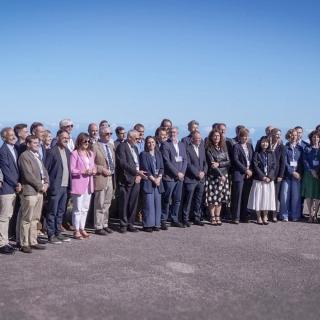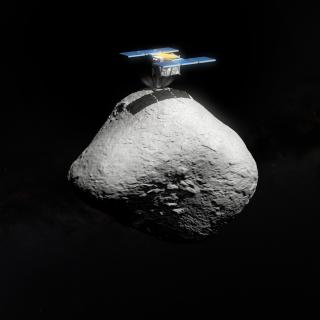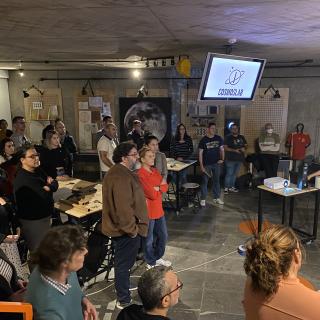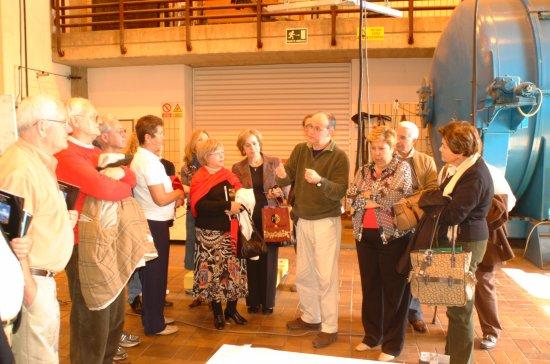It may interest you
-
 La Palma acoge durante tres días DiploInnova, un programa de Presidencia del Gobierno de Canarias organizado con la colaboración del IAC El presidente de Canarias, Fernando Clavijo, resaltó, esta mañana en el Roque de los Muchachos, en La Palma, el papel de Canarias en la resolución de los desafíos del planeta a través de la ciencia en la inauguración del programa DiploInnova , una jornada de diplomacia científica que busca posicionar a las islas en el ámbito internacional, dedicada en esta ocasión a la Astrofísica y el Espacio. Para Clavijo, la colaboración internacional en el ámbitoAdvertised on
La Palma acoge durante tres días DiploInnova, un programa de Presidencia del Gobierno de Canarias organizado con la colaboración del IAC El presidente de Canarias, Fernando Clavijo, resaltó, esta mañana en el Roque de los Muchachos, en La Palma, el papel de Canarias en la resolución de los desafíos del planeta a través de la ciencia en la inauguración del programa DiploInnova , una jornada de diplomacia científica que busca posicionar a las islas en el ámbito internacional, dedicada en esta ocasión a la Astrofísica y el Espacio. Para Clavijo, la colaboración internacional en el ámbitoAdvertised on -
 Astronomers have used telescopes around the world, includingthe Gran Telescopio Canarias (GTC or Grantecan) at the Roque de los Muchachos Observatory on La Palma, to study the asteroid 1998 KY26, revealing it to be almost three times smaller and spinning much faster than previously thought. The asteroid is the 2031 target for Japan’s Hayabusa2 extended mission. The new observations offer key information for the mission’s operations at the asteroid. “We found that the reality of the object is completely different from what it was previously described as,” says astronomer Toni Santana-Ros, aAdvertised on
Astronomers have used telescopes around the world, includingthe Gran Telescopio Canarias (GTC or Grantecan) at the Roque de los Muchachos Observatory on La Palma, to study the asteroid 1998 KY26, revealing it to be almost three times smaller and spinning much faster than previously thought. The asteroid is the 2031 target for Japan’s Hayabusa2 extended mission. The new observations offer key information for the mission’s operations at the asteroid. “We found that the reality of the object is completely different from what it was previously described as,” says astronomer Toni Santana-Ros, aAdvertised on -
 El proyecto educativo “CosmoLab: del aula al Sistema Solar”, desarrollado por el Instituto de Astrofísica de Canarias (IAC) y financiado principalmente por el Cabildo de Tenerife, anuncia la apertura de matrícula del nuevo curso “CosmoViaje 2.0: lo que sabemos e ignoramos del Universo” en colaboración con la Consejería de Educación del Gobierno de Canarias. Esta iniciativa busca acercar la astronomía a toda la comunidad educativa de Tenerife y fomentar el conocimiento y disfrute de los excepcionales cielos y observatorios de Canarias. CosmoLab persigue promover la cultura científica en elAdvertised on
El proyecto educativo “CosmoLab: del aula al Sistema Solar”, desarrollado por el Instituto de Astrofísica de Canarias (IAC) y financiado principalmente por el Cabildo de Tenerife, anuncia la apertura de matrícula del nuevo curso “CosmoViaje 2.0: lo que sabemos e ignoramos del Universo” en colaboración con la Consejería de Educación del Gobierno de Canarias. Esta iniciativa busca acercar la astronomía a toda la comunidad educativa de Tenerife y fomentar el conocimiento y disfrute de los excepcionales cielos y observatorios de Canarias. CosmoLab persigue promover la cultura científica en elAdvertised on
